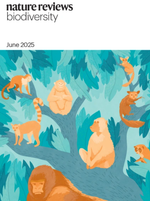Cell Host & Microbe
Bernardo Gutierrez, Hugo G. Castelán Sánchez, Darlan da Silva Candido, Ben Jackson, Shay Fleishon, Renaud Houzet, Christopher Ruis, Luis Delay, Nuno R. Faria, Andrew Rambaut, Oliver G. Pybus & Marina Escalera-Zamudio
View Journal Article / Working PaperAlthough recombination is a feature of coronavirus evolution, previously detected recombinant lineages of SARS-CoV-2 have shown limited circulation thus far. Here, we present a detailed phylogenetic analysis of four SARS-CoV-2 lineages to investigate the possibility of virus recombination among them. Our analyses reveal well-supported phylogenetic differences between the Orf1ab region encoding viral non-structural proteins and the rest of the genome, including Spike (S) protein and remaining reading frames. By accounting for several deletions in NSP6, Orf3a, and S, we conclude that the B.1.628 major cluster, now designated as lineage XB, originated from a recombination event between viruses of B.1.631 and B.1.634 lineages. This scenario is supported by the spatiotemporal distribution of these lineages across the USA and Mexico during 2021, suggesting that the recombination event originated in this geographical region. This event raises important questions regarding the role and potential effects of recombination on SARS-CoV-2 evolution.




